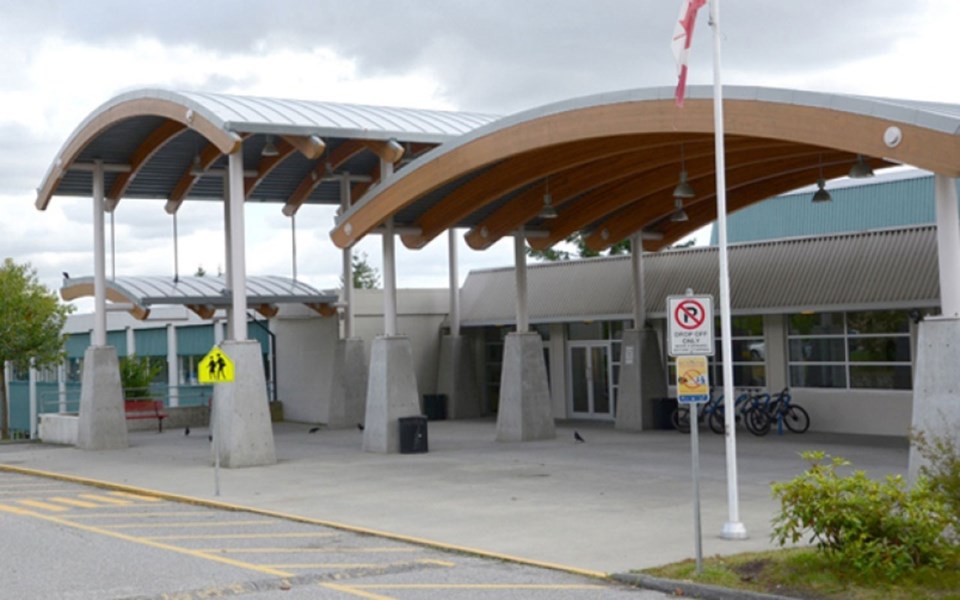A teacher at Sentinel Secondary in West Vancouver is considering filing a WorkSafe claim after contracting COVID-19—most likely from a student—reportedly without being warned that she was potentially a close contact by health authorities.
According to West Vancouver Teachers Association president Renee Willock, the teacher was not told to self-isolate by health authorities doing contact tracing on the student—only students sitting closest to that person were told to stay home.
But two days later, the teacher started to develop symptoms and has since tested positive for the virus, said Willock.
That only some students in the classroom were told to stay home isn’t how teachers thought the cohort system would work, said Willock.
“It’s difficult because the protocols have been changing almost daily,” she said.
If the teacher decides to file a claim, it would likely be the first claim connected to COVID-19 in schools as a workplace issue, said Willock.
A Grade 12 student at the school who spoke to the North Shore News Monday said some of his friends who are in that class and still attending school with a substitute teacher are wondering why they haven’t been told to self-isolate.
“None of the other students in that class have necessarily been told why it’s ok for them to stay in,” he said, noting the physical constraints of the classroom mean students don’t have large spaces between them.
“They’ve heard nothing.”
Teachers and parents were first made aware of the COVID-19 exposure when Principal Michael Finch sent an email notice on the weekend, stating, “We have been made aware that a member of our school community has tested positive for COVID-19.”
Since then, however, there have been few details provided by either the West Vancouver School District or Vancouver Coastal Health.
That’s left teachers stressed and confused, said Willock.
Willock said it’s also concerning that the school has not been listed on Vancouver Coastal Health’s web page of school exposures.
“I know this is inaccurate,” said Willock.
Nine students at Collingwood School, a private school in West Vancouver, are also self-isolating this week after being exposed to a student with the virus at the school last week.
“This is a standard measure that is taken to ensure that there is no ongoing transmission in the school and does not mean that they are sick,” wrote Head of School Lisa Evans in a letter to parents.
Collingwood was also not on a school exposure list from Vancouver Coastal Health—which had not listed any schools in the region on Monday—including Mulgrave private school in West Vancouver where a group of Grade 9 students and their teachers spent 14 days in isolation earlier this month after a student in the group tested positive for COVID-19.
In contrast, the Fraser Health Authority listed 14 schools in the Surrey School District with COVID-19 exposures on Monday.
According to information posted on the website, an “exposure” is defined as when a single person with a lab-confirmed case of COVID-19 attended school during their infectious period.
Henry said Monday that all school exposures were supposed to be posted.
Henry also told reporters that even if they are in the same classroom as someone who has tested positive for the virus, most students won’t be considered close contacts. “If you’re sitting at a desk and you’re not close to them, you’ve not had close contact with them,” she said.
“And unless we start to see transmission within the classroom, it would be very unlikely that an entire classroom would have to self isolate.”
Henry said when people have been potentially exposed to the virus at school “I absolutely am sure that my colleagues and VCH are following up with the individuals who were exposed.”
In some cases, a teacher or student may have become infected with the virus through family or other social contacts but haven’t been in the school during their infectious period, said Henry.
Vancouver Coastal Health did not respond to several requests for comment on the school exposures at Sentinel and Collingwood.
She said so far most of the school exposures have been adults in the school setting.
This week, health authorities also changed the list of symptoms that would require children to stay home from school, taking several of those—like a runny nose—off the list. That’s because a runny nose by itself is much less likely to be a symptom of COVID-19, especially among children, said Henry. A fever or cough—by themselves or in combination with other symptoms—are much more likely to be a symptom of the virus.
Read more from the North Shore News





